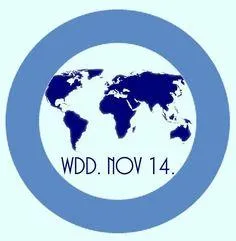Hello @"dixon"
Let's see to see to see ... Where did you get diabetes, renal cramps and the breath in your heart will make you difficult to live many years?With diabetes, with current media, you can live many years without complications.Renal cramps will probably be something passenger that will not give you more problems (and although they gave many problems, it would be difficult for your life to shorten).And the breath in the heart, if you do not have any severe congenital heart disease (which I do not think it is the case), it will not be a problem for you to live many years.So take air and breathe.Tell these concerns to your doctor, you should answer them.Do not stay without asking.If you get nervous at the time of the visit and forget, take a role with pointed doubts (try not to aim more than 5 if it can be hahaha is a joke)
When you say that you are going to take diabetes very seriously, ask yourself the following question: are you going to live for diabetes or are you going to live with diabetes?
I personally believe that starting to make a self -taught diet through the use of apps, thinking of quading daily protein and fat amounts, just debuted, it is to end crazy (it is an expression).I think it is an unrealistic objective to consider life by telling grams of proteins and fats as if you were a severe renal patient on dialysis (that even in those cases it is done so).Your life will be long and full and there will be days that you will go out to dinner out of tapas and almost everything will be protein.There will be days that you feel like a salad and a fideua.And days that you will feel like a chuleton of half a kilo.It is the usual problem: there are patients who spend too much and patients who take everything too much to the letter.When they recommended the low protein diet due to the issue of lithiasis (it may be a little precipitously taking into account that it is the first episode), it does not mean that you eat 60 grams daily protein every day.In these cases it is recommended to reduce animal protein, qualitatively, for example, not eating animal protein more than 1 time.
Another very important point is to keep in mind that your calculations are fine (it is a slightly hyperproteic diet, as they contribute 18% of the calories, and in the lower limit of what is considered usual for carbohydrate content: 40%of total calories).But that the distribution of macronutrients is correct does not equals the diet to be healthy, since those amounts can be ingested based on not eating vegetables and fruit, eating processed meats, refined and sweet farinaces.And yet, many people would agree that eating like this is not healthy.
So, to begin with, I think the key question is What diet did health professionals give you when you debuted? If you want to share it and we can comment.
Regarding the postprandial glycemia controls , the goal is to be less than 180 mg/dl at 2 hours after having started eating.If you start eating at 1, even if you finish at 13:30, the control should be at 3:00 p.m.
The 80-130 objectives are before meals.
Regarding relatively poor diets in carbohydrates, in theory, they would not have to be harmful if they do not involve an increase in animal protein and "bad" fats.What usually goes on practice is that by reducing carbohydrates, people increase the intake of animal protein and we slowly approach the swampy terrain of Mr. Dukan and similar things.That is the mechanism that is believed to be behind to explain the studies that demonstrate association between poor hydrates diets and increased cardiovascular risk.Because making a very poor diet in carbohydrates, without much animal protein, and with healthy fats, is quite difficult.Where fromDo you take no animal protein?Of nuts?Ok, they have healthy proteins and fats, without almost hydrates.Of the legumes?Perfect, they have proteins, but they also have carbohydrates (which is not a "but", but it is an impediment to maintaining the amount of low hydrates).It is true that in Spain we have access to quality fats since we are olive oil producers and we have relatively easy access to fish.But I think the options are limited and the diet becomes poorer.Regarding thinking that we already achieved enough carbohydrates of vegetables and fruits, it should be remembered that the majority of vegetables provide a ration of hydrates for every 300 g of food, and that fruits provide 1-1.5 rations per piece, with whatWhat, if that were our "non -protein" carbohydrate source (to exclude legumes), or we would spend the day eating fruit, or the diet would be very poor in carbohydrates.
Anyway, this is a mess and I know, that is why, if you want, we rewind and comment on the diet that you have prescribed.Regarding going to a nutritionist privately on your own to make a diet before returning, the thing can be complicated a lot, because according to the diet that makes you, they can change your insulin needs a lot.I do not say that I will not adjust them correctly, but I think we would be putting too many variables in the equation ...
No signature configured, update it from user's profile.

